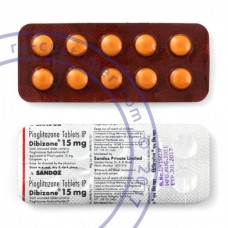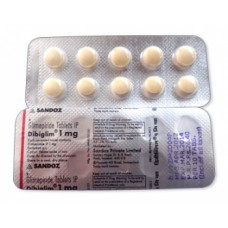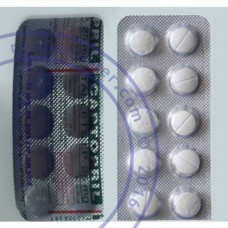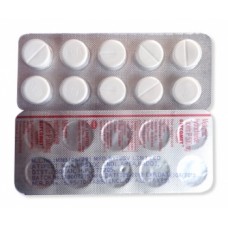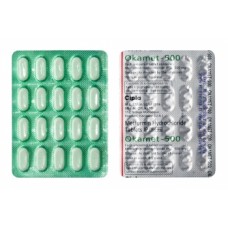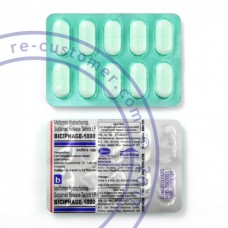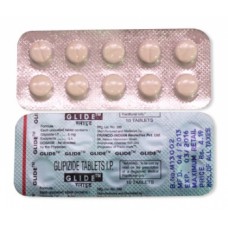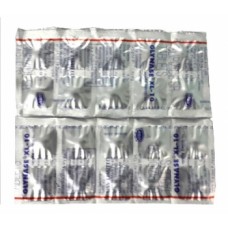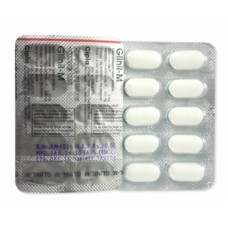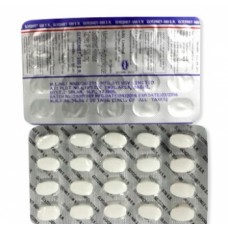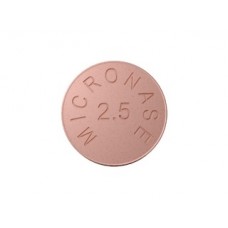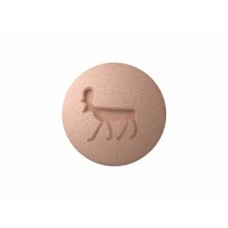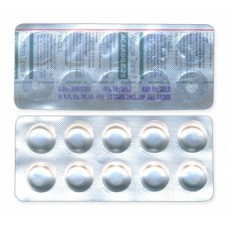
Diabetes
Diabetes is a chronic condition characterized by high blood sugar levels. There are two main types of diabetes: type 1 diabetes and type 2 diabetes.
Type 1 diabetes is an autoimmune disease that occurs when the body's immune system attacks and destroys the insulin-producing cells in the pancreas. Insulin is a hormone that regulates blood sugar levels. Without insulin, sugar builds up in the bloodstream and can cause damage to the body's organs and tissues. Type 1 diabetes usually develops in childhood or adolescence, but it can occur at any age.
Type 2 diabetes is a metabolic disorder that occurs when the body becomes resistant to insulin or doesn't produce enough insulin to maintain normal blood sugar levels. Type 2 diabetes is often related to lifestyle factors such as obesity, physical inactivity, and poor diet. It is the most common form of diabetes and usually develops in middle-aged or older adults, but it can also occur in younger people.
Both types of diabetes can lead to serious complications such as cardiovascular disease, kidney disease, nerve damage, and blindness if not properly managed. Treatment for diabetes usually involves a combination of medication, lifestyle changes (such as a healthy diet and regular exercise), and monitoring blood sugar levels.
Cialis soft, Pharmacy Italy online, What is avana
What is diabetes?
Diabetes is a chronic condition characterized by high levels of sugar (glucose) in the blood. There are two main types of diabetes: type 1 diabetes and type 2 diabetes.
Type 1 diabetes occurs when the body's immune system attacks and destroys the insulin-producing cells in the pancreas. Insulin is a hormone that regulates blood sugar levels, and without enough insulin, sugar builds up in the bloodstream.
Type 2 diabetes occurs when the body becomes resistant to insulin or doesn't produce enough insulin to maintain normal blood sugar levels. This type of diabetes is often related to lifestyle factors such as obesity, physical inactivity, and poor diet.
Both types of diabetes can lead to serious complications such as cardiovascular disease, kidney disease, nerve damage, and blindness if not properly managed. Treatment for diabetes usually involves a combination of medication, lifestyle changes (such as a healthy diet and regular exercise), and monitoring blood sugar levels.
What are the types of diabetes?
There are two main types of diabetes: type 1 diabetes and type 2 diabetes. Additionally, there are other less common types of diabetes:
- Type 1 diabetes: This type of diabetes is also known as insulin-dependent diabetes or juvenile diabetes. It occurs when the immune system attacks and destroys the insulin-producing cells in the pancreas, resulting in a lack of insulin in the body. This type of diabetes usually develops in childhood or adolescence, but it can occur at any age.
- Type 2 diabetes: This type of diabetes is also known as non-insulin-dependent diabetes. It occurs when the body becomes resistant to insulin or doesn't produce enough insulin to maintain normal blood sugar levels. This type of diabetes is often related to lifestyle factors such as obesity, physical inactivity, and poor diet. It is the most common form of diabetes and usually develops in middle-aged or older adults, but it can also occur in younger people.
- Gestational diabetes: This type of diabetes develops during pregnancy and usually goes away after the baby is born. However, women who develop gestational diabetes have an increased risk of developing type 2 diabetes later in life.
- LADA (Latent Autoimmune Diabetes in Adults): This is a form of type 1 diabetes that develops in adults.
- MODY (Maturity Onset Diabetes of the Young): This is a rare form of diabetes that is inherited and usually develops before the age of 25.
- Secondary diabetes: This type of diabetes is caused by other medical conditions, such as cystic fibrosis or pancreatitis, or as a side effect of certain medications.
How common is diabetes?
Diabetes is a very common condition worldwide. According to the International Diabetes Federation, in 2021, an estimated 537 million adults (aged 20-79 years) were living with diabetes globally, and this number is projected to rise to 643 million by 2045.
In the United States, the Centers for Disease Control and Prevention (CDC) estimates that about 34.2 million people, or 10.5% of the population, have diabetes. Of those, approximately 90-95% have type 2 diabetes, while the remaining 5-10% have type 1 diabetes or other less common types.
The prevalence of diabetes is increasing due to factors such as aging populations, unhealthy diets, physical inactivity, and obesity. Diabetes is a major public health concern, as it can lead to serious complications such as cardiovascular disease, kidney disease, nerve damage, and blindness if not properly managed.
What are the symptoms of diabetes?
The symptoms of diabetes can vary depending on the type of diabetes and how long a person has had the condition. Some common symptoms of diabetes include:
- Frequent urination: Excess sugar in the bloodstream can cause the kidneys to work harder to filter and absorb the sugar. This can lead to frequent urination, particularly at night.
- Excessive thirst: As a result of frequent urination, the body can become dehydrated, leading to excessive thirst.
- Hunger: Even after eating, people with diabetes may feel hungry because the body is not able to properly use the energy from the food.
- Fatigue: Lack of energy and feelings of tiredness are common in people with diabetes due to high blood sugar levels affecting the body's ability to convert glucose into energy.
- Blurry vision: High blood sugar levels can cause the lens in the eye to swell, leading to blurred vision.
- Slow healing of wounds: Diabetes can affect the body's ability to heal wounds and infections.
- Numbness or tingling in hands or feet: High blood sugar levels can cause nerve damage, leading to numbness, tingling, or a burning sensation in the hands and feet.
It's important to note that some people with type 2 diabetes may not experience any symptoms in the early stages of the disease, and some people with type 1 diabetes may have rapid onset of symptoms. Therefore, it's important to get regular check-ups and blood sugar tests if you are at risk of diabetes or have a family history of the condition.
What causes diabetes?
The causes of diabetes can vary depending on the type of diabetes.
Type 1 diabetes is caused by an autoimmune response in which the body's immune system attacks and destroys the insulin-producing cells in the pancreas. The exact cause of this autoimmune response is not yet fully understood, but it may be related to genetic and environmental factors.
Type 2 diabetes is caused by a combination of genetic and lifestyle factors, such as obesity, physical inactivity, and poor diet. People with type 2 diabetes may also have insulin resistance, which means that their bodies do not respond properly to insulin or do not produce enough insulin to maintain normal blood sugar levels.
Other less common types of diabetes, such as gestational diabetes, LADA, MODY, and secondary diabetes, may be caused by a variety of factors, including genetic mutations, hormonal imbalances, or medical conditions that affect the pancreas or other organs involved in glucose regulation.
Overall, the development of diabetes is often the result of a complex interplay of genetic, environmental, and lifestyle factors, and the exact cause may be different for each individual.
Diabetes medications
There are several classes of medications used to treat diabetes, and the choice of medication depends on the type of diabetes and the individual's specific needs.
For type 1 diabetes, insulin is the primary medication used to regulate blood sugar levels. Insulin can be administered through injections, pumps, or inhalers.
For type 2 diabetes, medications are used to improve insulin sensitivity, increase insulin production, or decrease glucose production in the liver. Some of the most common classes of medications for type 2 diabetes include:
- Metformin: This medication helps to lower blood sugar levels by decreasing glucose production in the liver and improving insulin sensitivity.
- Sulfonylureas: These medications stimulate the pancreas to produce more insulin.
- DPP-4 inhibitors: These medications help to regulate blood sugar levels by increasing insulin release and decreasing glucose production.
- GLP-1 receptor agonists: These medications stimulate the production of insulin and decrease glucose production in the liver.
- SGLT2 inhibitors: These medications help to lower blood sugar levels by increasing glucose excretion in the urine.
Other less common medications may also be used to treat diabetes, depending on the individual's specific needs and medical history. It's important to work closely with a healthcare provider to develop a personalized treatment plan for diabetes.
Medicines for type 1 diabetes
For type 1 diabetes, insulin is the primary medication used to regulate blood sugar levels. Insulin is a hormone that helps to transport glucose from the bloodstream into the body's cells to be used for energy. In type 1 diabetes, the body's immune system attacks and destroys the insulin-producing cells in the pancreas, leading to a deficiency of insulin.
Insulin can be administered through injections, pumps, or inhalers. The choice of insulin therapy and the dosing regimen depends on the individual's specific needs, lifestyle, and glucose goals. The main types of insulin used to treat type 1 diabetes include:
- Rapid-acting insulin: This type of insulin is taken before meals to help regulate blood sugar levels after eating. Examples of rapid-acting insulin include insulin lispro (Humalog), insulin aspart (NovoLog), and insulin glulisine (Apidra).
- Short-acting insulin: This type of insulin is taken before meals to help regulate blood sugar levels after eating. Examples of short-acting insulin include regular insulin (Humulin R, Novolin R).
- Intermediate-acting insulin: This type of insulin is taken once or twice a day to help regulate blood sugar levels between meals and overnight. Examples of intermediate-acting insulin include NPH insulin (Humulin N, Novolin N).
- Long-acting insulin: This type of insulin is taken once or twice a day to help regulate blood sugar levels between meals and overnight. Examples of long-acting insulin include insulin glargine (Lantus), insulin detemir (Levemir), and insulin degludec (Tresiba).
In addition to insulin therapy, some people with type 1 diabetes may also benefit from using other medications to help manage blood sugar levels, such as pramlintide (Symlin), which helps to slow down the rate at which food is absorbed, or SGLT2 inhibitors, which increase glucose excretion in the urine.
Medicines for type 2 diabetes
For type 2 diabetes, medications are used to improve insulin sensitivity, increase insulin production, or decrease glucose production in the liver. The choice of medication depends on the individual's specific needs, medical history, and glucose goals.
Some of the most common classes of medications used to treat type 2 diabetes include:
- Metformin: This medication is often the first-line treatment for type 2 diabetes. It helps to lower blood sugar levels by decreasing glucose production in the liver and improving insulin sensitivity.
- Sulfonylureas: These medications stimulate the pancreas to produce more insulin. Examples of sulfonylureas include glimepiride (Amaryl), glipizide (Glucotrol), and glyburide (Diabeta, Glynase).
- DPP-4 inhibitors: These medications help to regulate blood sugar levels by increasing insulin release and decreasing glucose production. Examples of DPP-4 inhibitors include sitagliptin (Januvia), saxagliptin (Onglyza), and linagliptin (Tradjenta).
- GLP-1 receptor agonists: These medications stimulate the production of insulin and decrease glucose production in the liver. Examples of GLP-1 receptor agonists include exenatide (Byetta), liraglutide (Victoza), and dulaglutide (Trulicity).
- SGLT2 inhibitors: These medications help to lower blood sugar levels by increasing glucose excretion in the urine. Examples of SGLT2 inhibitors include canagliflozin (Invokana), dapagliflozin (Farxiga), and empagliflozin (Jardiance).
Other less common medications may also be used to treat type 2 diabetes, such as thiazolidinediones (TZDs), meglitinides, alpha-glucosidase inhibitors, and insulin therapy. It's important to work closely with a healthcare provider to develop a personalized treatment plan for type 2 diabetes.
Diabetes Medications List
Here is a list of some common medications used to treat diabetes:
- Insulin: Rapid-acting, short-acting, intermediate-acting, and long-acting formulations are available.
- Metformin: A medication used to treat type 2 diabetes that works by decreasing glucose production in the liver and improving insulin sensitivity.
- Sulfonylureas: Medications that stimulate the pancreas to produce more insulin, including glimepiride, glipizide, and glyburide.
- DPP-4 inhibitors: Medications that help regulate blood sugar levels by increasing insulin release and decreasing glucose production, including sitagliptin, saxagliptin, and linagliptin.
- GLP-1 receptor agonists: Medications that stimulate the production of insulin and decrease glucose production in the liver, including exenatide, liraglutide, and dulaglutide.
- SGLT2 inhibitors: Medications that help lower blood sugar levels by increasing glucose excretion in the urine, including canagliflozin, dapagliflozin, and empagliflozin.
- Thiazolidinediones (TZDs): Medications that improve insulin sensitivity, including pioglitazone and rosiglitazone.
- Meglitinides: Medications that stimulate the pancreas to produce more insulin, including repaglinide and nateglinide.
- Alpha-glucosidase inhibitors: Medications that slow down the absorption of carbohydrates in the intestines, including acarbose and miglitol.
- Combination medications: Medications that combine two or more diabetes medications, such as metformin and sulfonylureas (glipizide/metformin) or DPP-4 inhibitors and metformin (sitagliptin/metformin).
It's important to note that not all of these medications are appropriate for every person with diabetes, and treatment plans should be individualized based on each person's unique needs and medical history.
Nowadays diabetes, unfortunately, is not uncommon. "Diabetes" is translated from Greek as "leakage" and "diabetes mellitus" literally signify "sugar loses". This is the key feature of the ailment an increase of glucose in the organism and removing it with urine.
Glucose is the key power source for humans. It is also the main food for the brain and in many ways it affects many psychological processes. At a low level of glucose processes that require mental efforts (eg, self-control, making difficult decisions, and so on) may be affected.
According to the vast majority of doctors, the main factor of the sickness is a genetic predisposition, but it also might not be hereditary. The reason of diabetes is incapability of an organism to form the necessary quantity of insulin or if insulin`s quality isn`t proper. The fundamental task of this chemical substance is to deliver glucose into cells. However, insulin is responsible not only for mastering of sugar, but also for fat and protein metabolism, so a diabetic diseased sooner or later acquire severe metabolic disorders.
Medics distinguish 2 main kinds of the ailment. Insulin-dependent (I type), formerly known as juvenile, and insulin independent (II type).
Type I transpires more frequently in people under the age of 30 years, from it suffer in an average 10-15% of all the patients. Patients with type II make up the vast majority of all affected by this ailment (approximately 85%). Surplus weight and diabetes almost always go together. Only 15 percent of all diabetics have normal weight, the rest suffers from adiposity. Type I is a state in which insulin is absent completely. In this case, patients are force to, in addition to other treatments, use injections of insulin. This category of the ailment is more typical for kids and the youth. Type II progresses slowly; signs of it are implicit or completely absent. This state does not require insulin injections. This kind of the sickness is typical for grown-ups and the elderly.
Check yourself for the presence of the sickness (or identify if you are at risk) is possible before the blood test will be conducted. Sufficient is to heed to your body. What signs and signals should alert you?
- Excessive thirst, increased urination. To get rid of the excess glucose, kidneys have to work really hard; thereby a diseased frequently goes to the bathroom, especially at night. Increased thirst stems from the fact that the body wants to fill fluid loss
- Itchy skin, hyperpigmentation, skin coarsening. This defect occurs as a result of dry skin and impaired circulation. Howbeit, even with normal glucose index in humans may already be insulin insusceptibility
- Slow wound healing. Excessive sugar ruins blood vessels, hinders blood flow to the site of the wound and inhibits healing
- Fungal infections (inclusively persistent vaginal infections in females). Fungi and bacteria feel cozy in an environment rich in sugar
- Poor eyesight. Sick with diabetes are prone to impaired vision, feeling of floating objects and flashes before the eyes. High index of glucose affect the shape of the crystalline lens. After the normalization of glucose, this symptom should vanish
- Numbness, burning sensation in the hands and feet, swelling. Diabetes can harm nerve endings. If such signs have appeared recently, the control of sugar allows you to get rid of them
- Fast weight loss. On the background of diabetes may occur not only rapid weight gain, but as well its rapid loss
- Chronic fatigue. This hidden sign of diabetes many try to explain by high workload, lack of sleep, poor diet, stress. In fact, excessive tiredness and fatigability indicate that muscles and the brain do not get enough glucose
- Increased appetite and cravings for sweets. For the proper functioning the brain requires glucose. After eating, the concentration of glucose in the blood increases. But if insulin sensitivity is violated, glucose doesn`t enter the brain, and turns into fatty tissues, which further increases the insulin insusceptibility. But the brain still requires food, especially sweet. Therefore, people eat more and gaining extra weight
- Adiposity. Individuals with obesity either already have diabetes mellitus, or will soon acquire it, if they do not normalize the weight. Corpulence reduces the responsiveness of cells to insulin
Regularly verify your sugar level if your age is over 40, your weight exceeds the norm, among your relatives are diabetics.
Everyone should check the sugar level once a year. A normal sugar level is no more than 5.5 mmol/ l.
Living with diabetes has several key elements. You must perform scheduled daily monitoring of the sugar levels with a measuring device (glucometer). Measurement results must be regularly recorded in a diabetic diary, which gives knowledge about how the body reacts to certain events, what happens when injected a bigger or smaller dose of insulin or change the dosage of hypoglycohaemic pills. This data is really important for the health care provider; it helps to draw conclusions on the correctness of the selected insulin therapy. Really important are periodicals visits to the endocrinologist.
The underlying goal of the treatment is to achieve maximal compensation of improper metabolism, chiefly carbohydrates. The indicator of a positive progression is the normalization of blood sugar to parameters that are close to normal. Given the originality of the ailment in every individual the proper treatment may prescribe only a physician.
Diabetes Pharmacies
| Pharmacy | Rating |
| RX2040.COM | ★★★★★ 5/5 |
| RXShipFree.COM | ★★★★★ 5/5 |
| TheWorldsPharma.COM | ★★★★★ 5/5 |
| LightPharmacyPills.COM | ★★★★★ 5/5 |



